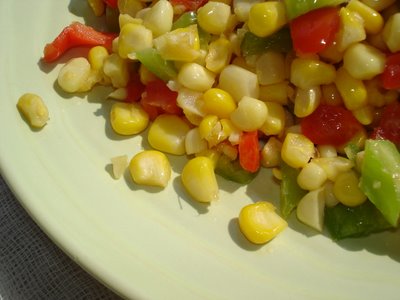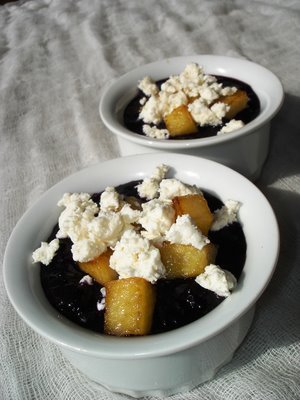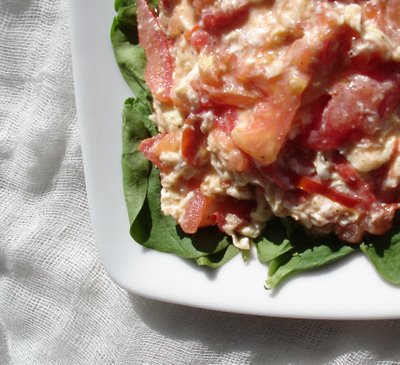
My mother cans every year and has an enviable repertoire of jams, jellies, pickles, fruit, vegetables, and meat. She always kept us kids out of the kitchen and away from the pressure cooker and boiling sugar during the process, and as a result I left home not knowing how. I'd always given her a hard time about failing to pass on this vital life skill until she replied that it is not that hard and I should be able to figure it out. With a frugal themed blog, I could not resist trying it for the Can You Can episode of Sugar High Friday.
Spiced peaches do double duty as a sweet or as a relish - the heat of the spices makes up for the lack of a sour element.
Boil together 1 cup of sugar and 1/2 cup of water with 6 cloves, 6 peppercorns, 6 allspice berries, and two cinnamon sticks until the sugar is dissolved. You can mix and match other whole spices; grains of paradise or ginger would work well. Make sure the cinnamon sticks are short enough to fit into your canning jars. Wash an orange and zest in long strips; add zest to syrup. Peel 1 lb firm peaches and cut into chunks; cook in the syrup for a few minutes until tender. (You want firmer peaches for this; use the softer ones to eat fresh or make soup.) Meanwhile, sterilize jars and lids and start water boiling for water bath.
Place cinnamon sticks in clean sterilized jars and coil in the orange zest. Pack in the peaches and whole spices and spoon the hot syrup over the fruit, leaving a couple centimeters of head space. Run a spoon up and down the sides to remove any air bubbles and partly tighten the lids. Process in water bath for fifteen minutes; remove jars and firmly tighten the lids. I was thrilled to hear the pop that meant the jar was sealing. This is a very small batch; it makes a couple half pints with a bit left over for your cereal the next day.









